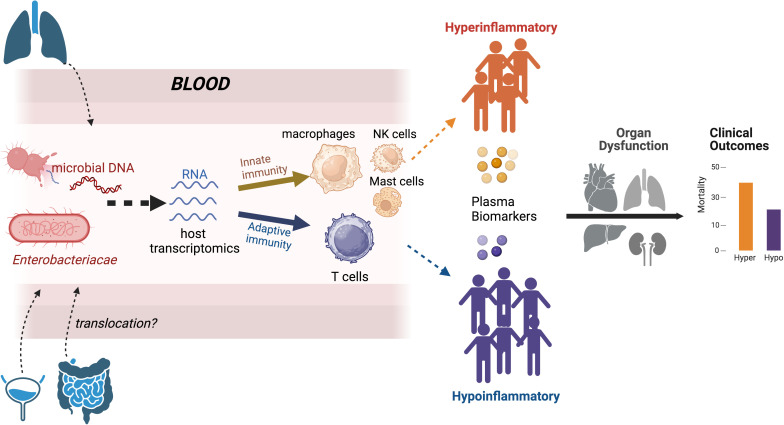Figure 1.
Conceptual advancement in understanding host–response phenotypes in critical illness. Current classification approaches by plasma biomarker concentrations offer robust associations with organ dysfunction and the prediction of clinical outcomes. The study by Neyton and colleagues (5) provides insights into more proximal determinants of phenotypes. Blood host transcriptomics analyses showed increased expression of genes and pathways involved in innate immune cells in hyperinflammatory patients, whereas hypoinflammatory patients had increased expression of genes involved in T-cell responses. Microbial DNA metagenomics showed a higher amount of microbial DNA in hyperinflammatory patients, who were also enriched for DNA belonging to the Enterobacteriaceae family. Enterobacteriaceae are typical enteric-origin taxa, raising the hypothesis of possible gut-to-blood translocation in hyperinflammatory patients. Hyper = hyperinflammatory; Hypo = hypoinflammatory; NK = natural killer.

